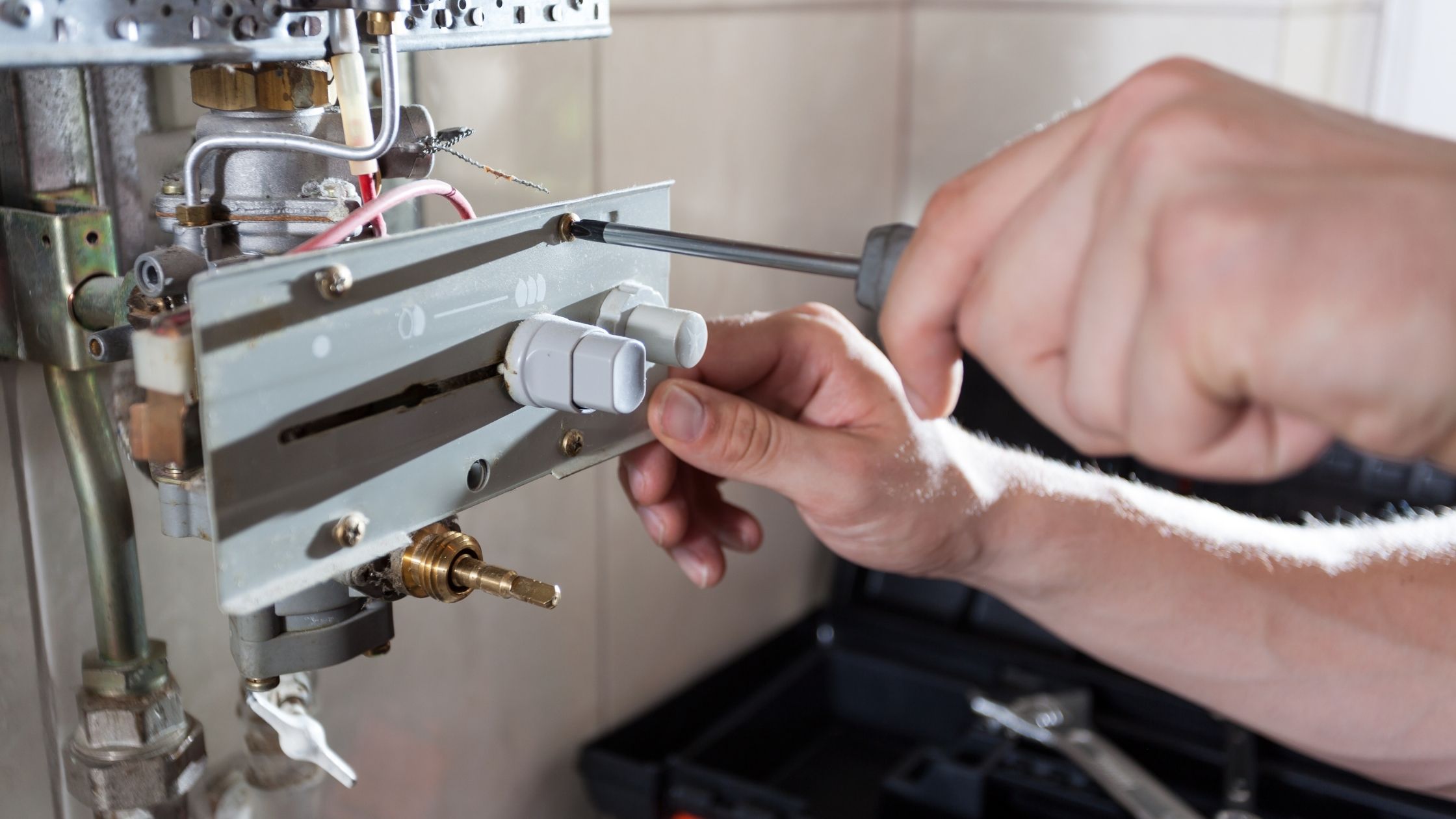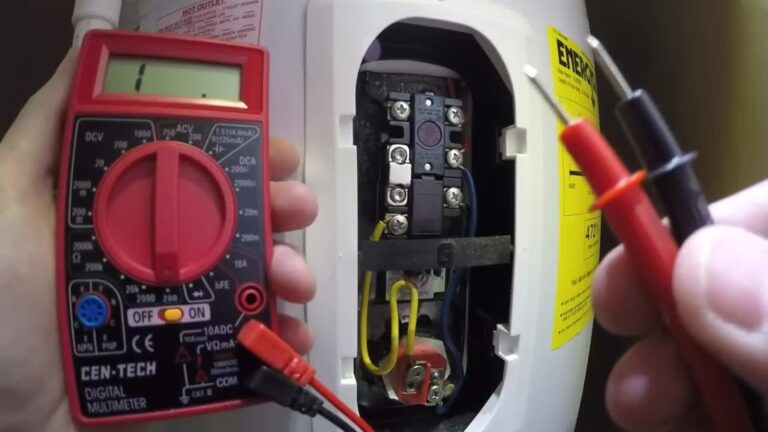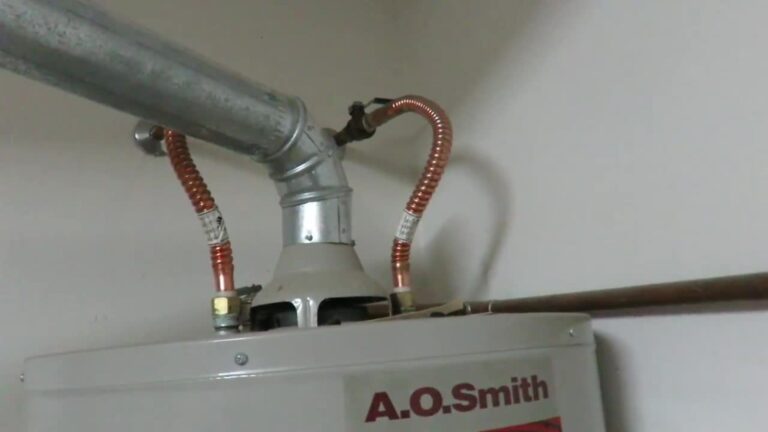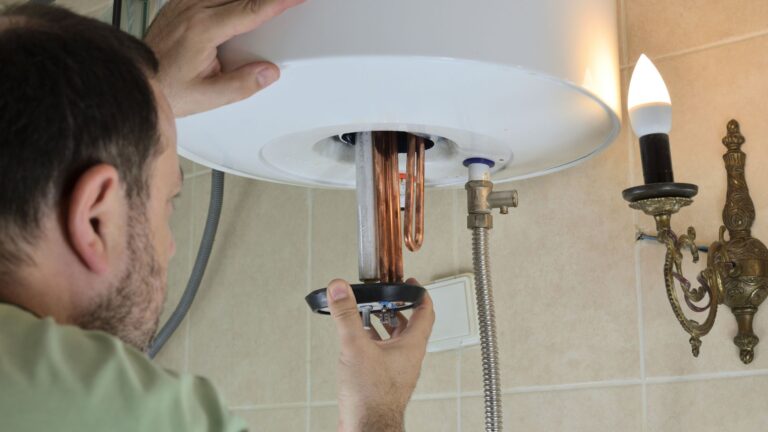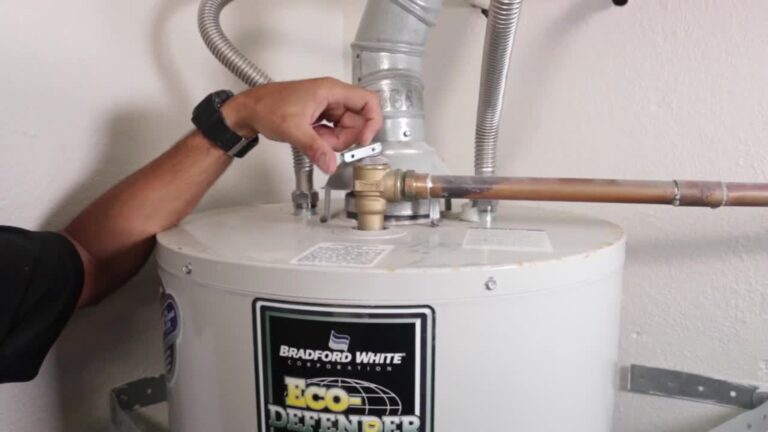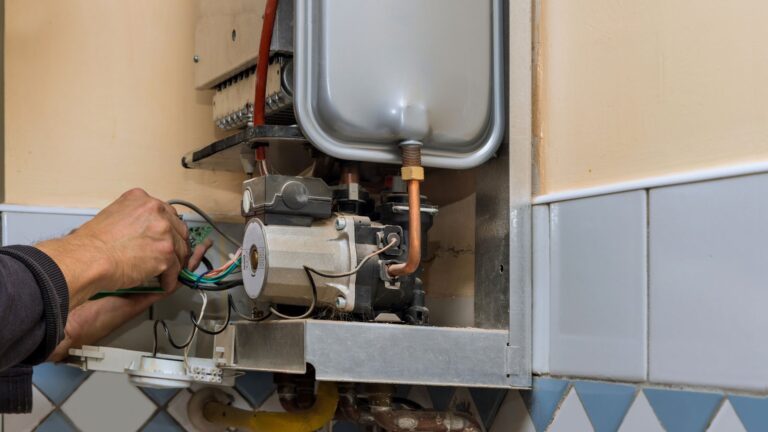Tankless Water Heater Not Working
In terms of energy efficiency, tankless water heaters are low-maintenance, and they’re relatively long-lasting. However, just like any other equipment, they aren’t totally free of problems.
Instantaneous or demand-type water heaters deliver hot water just when required and don’t store it in a tank. Standby energy losses from storage water heaters are avoided, allowing you to save money. For that reason, some small issues may arise from time to time, such as no hot water or a malfunctioning burner.
That’s why in this article, we’ve talked about the reasons behind a tankless water heater not working. Not only that, throughout the article, you’ll get to know how you can solve those problems or whether you need a plumber.
So let’s get started without cooling your heel.
Tankless Water Heater Problems You Will Face
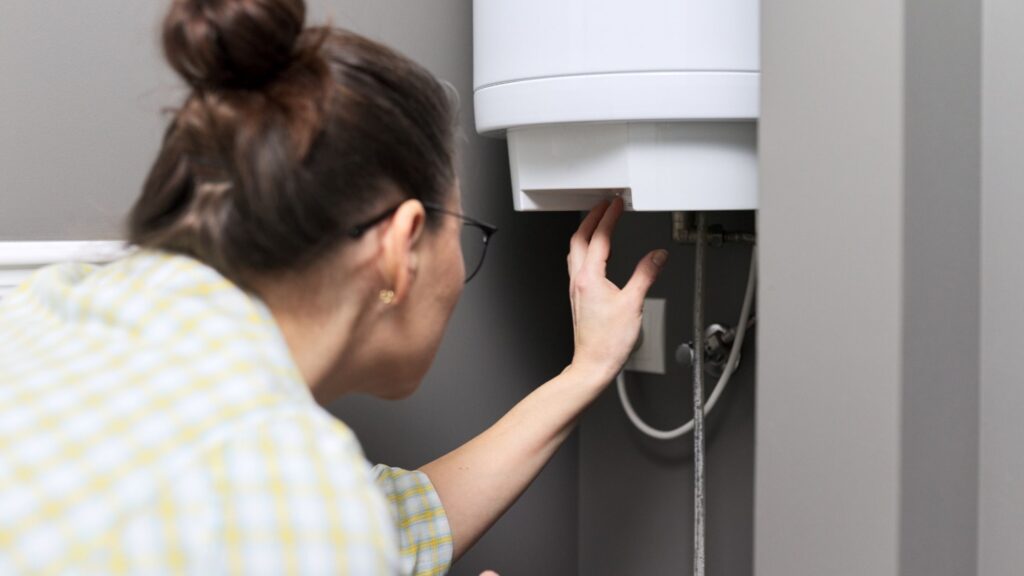
Investing in a tankless water heater is a smart move for your house or business. Additionally, they can save you money by boiling water just when it’s needed. If anything isn’t operating correctly in your water heater, problems might occur.
Here’re some of the most typical tankless water heater issues and maintenance concerns:
Deposition of Minerals
The expectation is that you’ll see clear and pure water every time you turn on the shower. You know what it’s supposed to smell like and can detect when something isn’t quite right with it.
If you notice discoloration or an unusual odor whenever you turn on the hot water faucet, something is probably interfering with your tankless water heater.
Despite the fact that this seems to be a terrible situation, it’s not as bad as you may imagine. Tankless systems are constantly exposed to the minerals in your tap water since they do not have a filter.
As you use the heater, minerals might begin to accumulate within the lines and throughout the system. Once the minerals have accumulated to a sufficient level, the water may begin to smell when the faucet is turned on, and it may seem hazy, yellow, or even brown in appearance.
Simply flushing your tankless hot water heater with vinegar or a descaling solution will take care of the problem. To ensure that you understand how to flush your unit, have the plumber guide you through the procedure.
In order to prevent accumulation from occurring in the first place, it’s recommended that you flush the system once every six months. Even better, by doing so, you’ll be able to prolong the unit’s life and ensure that you’ll always have hot water available when you need it.
Overburdened System
If your tankless water heater is supplying an immense amount of hot water at the same time, there’s a high chance that it can get overheated. In that case, it may struggle to provide the hot water you need, or it may even shut down completely.
Whenever this occurs, you should lower the demand for hot water by minimizing the number of simultaneous uses and try resetting your water heater. You can do one more thing to avoid this situation: upgrading to a tankless water heater with a bigger capacity or installing a second unit.
Although purchasing a second unit may seem to be a significant financial commitment, doing so might save you money in the long term since you’ll be using less water.
Blockage in Air Supply
The majority of tankless systems are intended to make troubleshooting difficulties as simple as possible.
When anything is amiss with the system, the display will at the very least offer you a general notion of what’s wrong with the system. An obstructed exhaust notice is the first and most typical problem message that most homeowners will encounter.
Tankless systems need access to fresh air at all times while they are in operation. It’s also important that they have a way to vent to the outside while they’re actively heating the water. If the exhaust is obstructed, they won’t access the air to keep the heat maintained.
Ensure that the exhaust channel is open if you are receiving an error message about the exhaust. Check the area around the water heater for dust bunnies and other things that might be obstructing the vent. Check around your home to see that any openings are clean of debris and free of obstructions. If you can’t locate anything that is obstructing the vents, contact your plumber to arrange an examination.
Fluctuations in Hot Water
The fluctuation in temperature is also known as a cold water sandwich. Now you must be wondering what a cold water sandwich is? Well, let’s tell you what it is and why this happened.
Consider the following scenario: A member of your family has just completed bathing, and it’s now your time. When you switch on the shower, you’ll first feel the warm water, but you’ll then be blasted with cold water for several seconds until the temperature gradually returns to normal.
Some hot water was left in the pipes leading to the second shower even after the first shower. When the second shower started, the warm water you felt at the beginning was trapped water.
If your shower water is chilly, it’s because there’s a lot of cold water in the pipes that go from the water heater to your shower. With each additional mile of travel, you’ll notice a distinct difference in water quality.
You can’t avoid this problem, but now that you’re aware of the issue, you can wait till the cold water has gone before getting in.
Ignition System Failure
A variety of factors might cause the failure of your water heater to ignite. Often, the gas supply is the source of the problem, so check that your propane tank is fully charged before proceeding.
Additionally, if your gas or water valves aren’t completely opened, this might result in the ignition not working properly. Check and completely open the gas and water valves.
If following these methods doesn’t address the ignition problem, it’s possible that your ignition pack has failed or that there is a more serious issue. You should contact technical support to troubleshoot the problem and, if required, place an order for new components.
Making Noises
Is your water heater making noises? If so, is there a low rumbling or popping sound when you turn it on? What if it’s a high-pitched whine instead?
The sound you’re hearing may be the sound of boiling water. When there’s a significant amount of sediment building in the bottom of a tank, it may cause the bottom of the tank to overheat, resulting in the water boiling.
In order to remove the silt from the tank, the first thing to attempt is to empty it. The tank may need to be replaced if this doesn’t alleviate the problem.
Can You Fix the Problems by Yourself, or Need to See An Expert?
There’re different types of tankless water heater that may arise. The user can solve those problems like cleaning inside the heater, whereas some issues need to be checked by experts.
In that case, you’ve to make your mind to spend some money on plumbers. The typical plumber’s hourly rate ranges from $45 to $150. A tiny, cheap item is typically paired with a significant labor charge in water heater repair costs.
Even if the cost is high, the peace of mind is worth it if you’re opposed to tinkering or unsure of your diagnostic skills.
How Much Does It Cost to Fix the Problems?
As reported by HomeAdvisor.com, the average cost to repair a water heater is $501, with the majority of homeowners paying between $203 and $800 for a single service call.
There’ll always be parts that are more expensive to repair in a household appliance. The following is a list of the most frequent boiler repair costs:
- $175–$485 to replace an ignition switch. Boiler ignitor sparks/heats the fuel, causing the combustion process to begin (oil, gas, or propane). To create heat, the fuel must be ignited. It’s thus impossible to heat the house without a working ignitor.
- Removal of mineral deposits might cost between $150 and $450. Limescale may develop up in your boiler tank due to mineral deposits from hard water. This might cause the system to overheat because of a lack of heat transmission.
- The replacement of the expansion tank will cost between $230 and $650. An overflowing expansion tank might cause your boiler to overheat or leak, which means it must be replaced.
- It can cost from $435 to $1,800 to replace the circulator pump. Your heating system won’t operate if your circulator is broken.
- Pipe leaks may cost anything from $55 to $350 to correct. Your boiler unit’s pipes might burst, reducing the system’s effectiveness or causing it to cease operating.
Other charges (apart from just the water heater itself) may also play a role in overall repair costs.
It’s possible that the water heater’s mount, supply pipes, airflow system, and drain pan may also need to be improved or changed depending on when the water heater was first installed and any new building requirements that demand compliance.
How To Fix the Problems of Your Tankless Water Heater
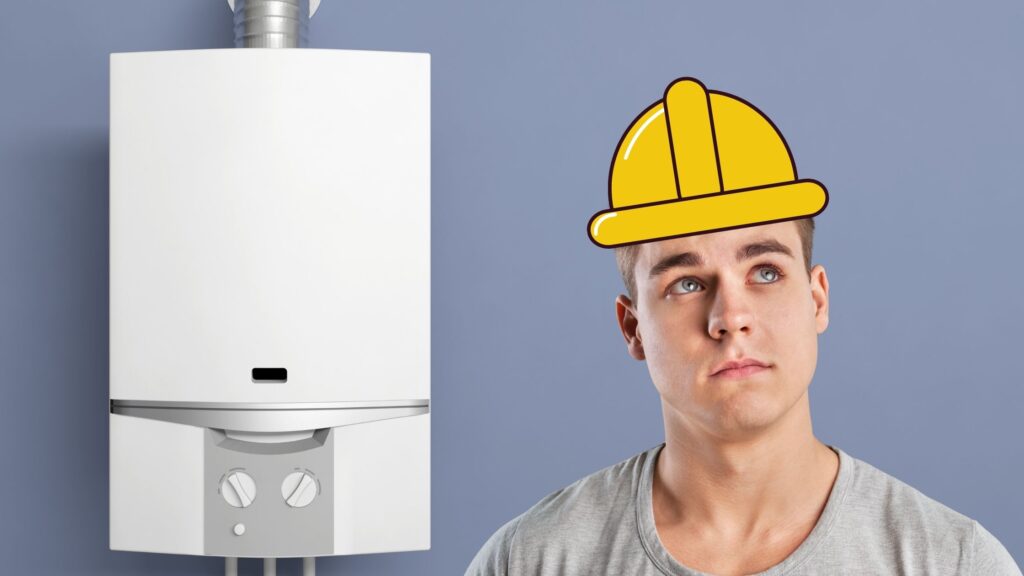
A tankless water heater needs to be flushed every six months to two years because of the tiny openings in the water heater. Plus, a flush may be necessary if the water flow becomes sluggish. You have the option of hiring a plumber or doing it yourself.
If you want to clean all your own, a 5-gallon bucket, two hoses, and 2 gallons of white vinegar are all you’ll need for this project. However, you can follow the steps given below during the cleaning.
- Uncover the unit. Close the water supply valves. For gas units, remove or switch off the electrical supply. Close the 240-volt circuit breaker for electric units or depress the disconnect button in the subpanel to stop the electricity. Relieve the water pressure by pulling out the silver tab on the pressure release valve.
- Add vinegar to the sump pump or submersible pump suction pickup. Connect the water heater’s intake to the sump pump and the pressure-relief valve to the bucket via hoses. Allow the pump to flow the vinegar through the water heater for 15–20 minutes.
- Remove the inline filter housing from the water intake. Replace the screen filter after cleaning it.
- Remove the pump from the bucket and quickly operate it to discharge any vinegar. Refill the bucket with clean water. For a few minutes, flow clean water through the system by putting in a pump and turning it on. Turn off the hoses, then on the water and electricity.
FAQs About Tankless Water Heater Not Working
- Why do tankless water heaters fail?
A tankless system might fail, just like a regular gas water heater or furnace. The gas nozzles might become filthy and not ignite properly. Furthermore, a water heater won’t turn on if the electronic ignition system fails, leaving you without hot water.
- When should I have a new tankless water heater installed?
It’s expected that tankless gas water heaters would last 20 years or longer, two to three times longer than tank-type heaters. Tankless electric units have shorter life lifetimes, ranging from 7 to 10 years, compared to conventional units.
- Do tankless water heaters need routine maintenance?
At the very least, tankless water heaters need annual maintenance. With a high-temperature setting and a high concentration of minerals in your hard water, tankless water heaters may require maintenance every six months.
- How much is a tankless water heater replacement?
The price of an electric tankless heater is from $500 to $700, while the price of a tankless gas heater is between $1,000 and $1,200. For a tankless water heater, the national average cost of installation is about $1,700.
Conclusion
Despite the fact that tankless water heaters are typically low-maintenance and highly efficient, there’re sometimes you’ll face that “Tankless Water Heater Not Working.” Tankless water heaters are prone to various difficulties, and we’ve discussed some of them in this article.
So from now on, you can check if your tankless water heater is not working, or you can get help from a plumber.
Watch in Video
Also Read:
Cheap Tankless Water Heater Reviews

